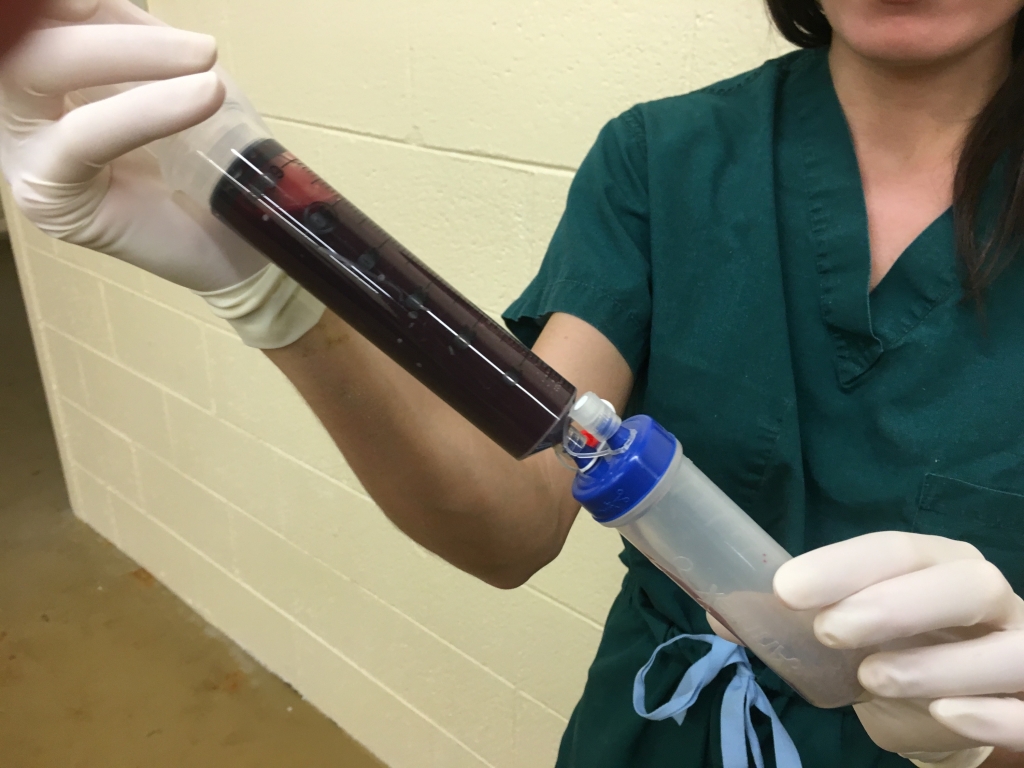
EVJ Generates Growing Evidence For Regenerative Medicine
Despite considerable advances in the field of veterinary regenerative medicine over the past 20 years, its true efficacy is still questioned in many instances. To enable easy access to the latest knowledge on the topic, the September issue of the Equine Veterinary Journal (EVJ) has published a ‘Special Collection’, which can be viewed here.
Guest edited by Lynn Pezzanite, the Special Collection contains the ‘Top 10’ recent publications from EVJ relating to regenerative therapies over the past five years which may help practitioners select one treatment over another for a specific clinical indication.
The term ‘regenerative therapies’ is a broad definition for innovative medical therapies that enable the body to repair, replace, restore, and regenerate damaged or diseased cells, tissues, and organs, while ‘biological products’ are those made from living material (human, animal, plant, microorganisms) used to treat or prevent disease. Options available to clinicians in equine practice include point-of-care blood or tissue derived products (autologous) including platelet rich plasma (PRP), autologous conditioned serum (ACS or interleukin receptor antagonist protein/IRAP), autologous protein solution (APS), bone marrow aspirate concentrate (BMAC or stromal vascular fraction) or cultured stromal cell-based products (autologous or allogeneic).
“Equine practitioners have access to use regenerative medicine to treat joint and soft tissue disorders as well as a variety of other conditions such as wounds, ophthalmic or theriogenology indications,” said Lynn. “However, in some instances due to lack of rigour in clinical study design, lack of demonstrated consistency in product formulation and lack of regulatory oversight that would assure appropriate standards, the true efficacy of some therapies remains controversial. We aim for this special collection to bring some clarity, to aid vets in their treatment choices.”
The survey-based study Current joint therapy usage in equine practice: Changes in the last 10 years shows an increase in prevalence of biological therapies since the previous survey ten years prior. The most common reason for selecting a biologic (most often ACS or IRAP followed by PRP) over corticosteroids for intra-articular used was perceived long-term efficacy.
A systematic review and meta-analysis of the efficacy of platelet-rich plasma products for treatment of equine joint disease concluded that PRP products as intra-articular treatments are likely efficacious to treat equine OA and have potential to treat septic arthritis, but that current evidence is limited due to few randomised controlled studies and high variability between types of PRP products.
Conditioned serum in vitro treatment of chondrocyte pellets and osteoarthritic explants is the first study to assess the global gene expression associated with inflammation and cartilage matrix degradation in IL-1ß-stimulated chondrocytes and histological staging of OA cartilage explants to evaluate treatment effect.
Racing performance of Thoroughbred racehorses with suspensory ligament branch desmitis treated with mesenchymal stem cells (2010–2019) concluded that treatment with MSCs resulted in the majority of Thoroughbred racehorses (71%) racing post treatment, with factors including having previously raced pre-injury and being male also positively associated with racing post-injury.
Treatment of racehorse superficial digital flexor tendonitis: A comparison of stem cell treatments to controlled exercise rehabilitation in 213 cases showed that, when compared with a controlled exercise rehabilitation programme alone, bone marrow derived MSC treatment, but not adipose-derived MSC treatment, was associated with an increased odds of returning to racing, with at least five races post-injury.
Intralesional bone marrow and superior check desmotomy is superior to conservative treatment of equine superficial digital flexor tendonitis showed that horses receiving the combination surgical intervention and bone marrow treatment were found to be more likely to return to racing than those managed conservatively.
The use of equine chondrogenic-induced mesenchymal stem cells as a treatment for osteoarthritis: A randomised, double-blinded, placebo-controlled proof-of-concept study concluded that allogeneic equine chondrogenic-induced MSC combined with equine plasma may be a promising treatment for osteoarthritis in horses.
Equine allogeneic tenogenic primed mesenchymal stem cells: A clinical field study in horses suffering from naturally occurring superficial digital flexor tendon and suspensory ligament injuries provides further support for intralesional administration of tenogenic-primed MSCs to improve healing quality and long-term outcomes in sport horses with naturally occurring SDFT and suspensory injuries.
Mesenchymal stem cells for treatment of musculoskeletal disease in horses: Relative merits of allogeneic versus autologous stem cells concluded that while the therapeutic use of autologous versus allogeneic MSCs has not been exhaustively studied, accumulating evidence from studies in horses suggests that allogeneic MSCs may be a safe alternative to autologous and that large, properly designed, randomised trials are necessary to evaluate short- and long-term local and systemic immune responses to more fully resolve this issue.
Extracellular vesicles from equine mesenchymal stem cells decrease inflammation markers in chondrocytes in vitro suggest that extracellular vesicles derived from MSCs can reduce inflammation and potentially be used as an adjuvant treatment to improve tissue and cartilage repair in articular pathologies.
“As regenerative treatment options continue to evolve, we hope this compelling collection will be of practical support for clinicians with their decision-making process for each case,” said Lynn. “Further studies, to evaluate and compare the functional activity of available treatments, to support optimal processing and storage conditions, to recommend dosage and to provide evidence-based protocols for clinical application, may allow for the improved treatment of equine disorders that have previously limited performance.”
The virtual issue can be found here.
More from BEVA
- Researchers identify probable cause of equine grass sickness
- Researchers identify probable cause of equine grass sickness
- BEVA Journals address the role of equine practice in the downfall of antibiotics
- Vets warn about the seasonal risk of sycamores
- EVJ showcases progress in multidisciplinary management of soft tissue surgical cases

 5 months ago
5 months ago  750 views
750 views
 2 weeks ago
2 weeks ago